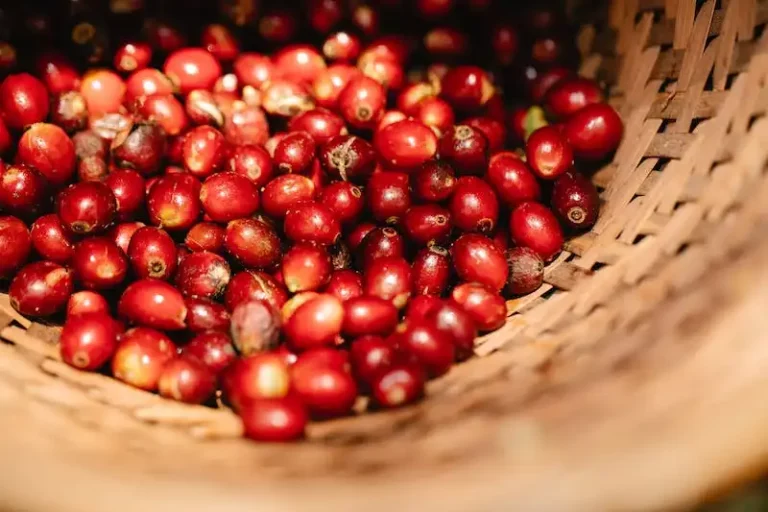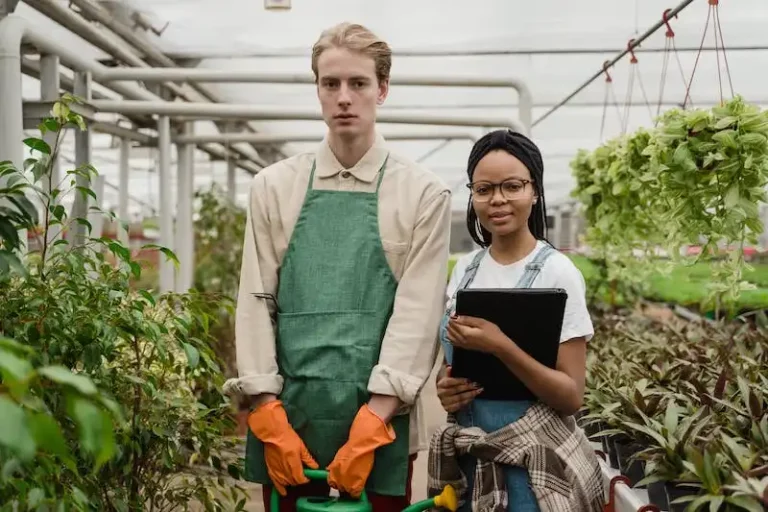Have you ever gone for a walk in the woods and found yourself covered in scratches, with your mouth stained purple from eating too many blackberries? If so, then you are likely familiar with the brambleberry bush. The brambleberry is a unique and rather firm fruit that grows on a branch covered in thorns.
While blackberries are the most commonly known brambleberries, there are actually many different types, each with their own characteristics and uses. Some enjoy the sweet and juicy berries, while others prefer the tartness of the fruit. No matter your preference, one thing is for certain – finding and foraging for brambleberries is one of the best ways to engage with nature.
During the summer months, brambleberries are free for the picking. Whether you’re enjoying them straight from the bush, adding them to a salad, or using them to make a delicious brambleberry pie, the possibilities are endless. Beyond their culinary uses, brambleberries also have a variety of other benefits. They can be used to make brambleberry soda, and the leaves of the bush can be used to make a firm and rather butter-like ointment.
However, it’s important to note that not all berries found on a brambleberry bush are actually brambleberries. There are many look-alikes that can be easily mistaken for the real thing. One of the easiest ways to tell the difference is by looking at the thorns on the bush. Brambleberries have thorns that are small and firm, while other berries, such as raspberries or blackberries, have thorns that are larger and more flexible.
If you’re new to the world of foraging, don’t worry. There are many resources available to help you learn how to identify and harvest brambleberries. Websites, books, and even online communities can provide all the information you need to get started. So, whether you’re a seasoned brambleberry enthusiast or just starting out, join the brambleberry brigade and let nature be your guide.
“What’s in a name? That which we call a brambleberry by any other name would taste as sweet.” – William Shakespeare
What Are Brambles – Learn What Makes A Plant A Bramble
Brambles are a type of plant that are characterized by their thorny stems and abundant fruits. There are lots of different types of brambles, including blackberries, raspberries, and thimbleberries. Learning to identify these plants can be informative and will help you in your foraging adventures.
One of the most common and well-known brambles is the blackberry. Instead of growing on bushes like other fruits, blackberries grow on long, arching canes. They have white flowers and their berries are usually black or deep purple in color. Blackberries are a favorite for many, as they can be used in a variety of ways, from making pies and jams to adding them to drinks like soda.
While blackberries are a popular choice, there are also other types of brambles that are worth exploring. Some brambles, like raspberries, have a different look but share similar characteristics. Instead of blackberries’ arching canes, raspberries have erect stems with thorny spikes. Their berries are usually red or yellow in color, and they have a slightly tart taste.
If you’re interested in foraging for brambles, it’s important to learn how to identify them correctly. There are a few look-alikes that can be easily mistaken for brambles, such as thimbleberries, dewberries, and black raspberries. These plants may have similarities in their appearance, like thorny stems and berries, but there are key differences in their characteristics that can help you tell them apart.
Within the world of brambles, there’s a blend of flavors and textures that make each type unique. Whether you’re a fan of the sweet and juicy blackberry or the tartness of raspberries, there’s a bramble for every taste preference. Learning about different bramble varieties can help you engage with nature and expand your foraging experiences.
So, the next time you’re out in the garden or exploring the outdoors, keep an eye out for these thorny plants. Their delicious berries and unique characteristics make brambles a fascinating part of nature.
If you want more info on brambles and how to identify them, check out Justin Everett’s informative video on the topic. He goes into detail about the letter characteristics of brambles and provides useful tips for identifying them. Watch the video and join the discussion in the comments to learn more!
What are Brambles
Brambles are a type of bush that produce delicious and nutritious fruits known as brambleberries. These berries are the best for cooking and can be used in a variety of dishes. They are also often used to make jams, jellies, and desserts.
There are many different types of brambleberries, but the most common ones you will find are raspberries and blackberries. Brambleberries are typically small, firm, and come in a variety of colors ranging from red to black. They are loaded with antioxidants and are a great source of vitamins.
Identifying brambles is fairly easy. They are typically found growing on thorny bushes and have branches that are covered in sharp thorns. The flowers of brambleberries are typically white or pink and are followed by the formation of the fruit. The berries themselves are obviously different from the bushes they grow on, and you will notice that they have a whitish or blackish color depending on the type.
When picking brambleberries, be sure to wear gloves to protect yourself from the thorns. It is also a good idea to bring a basket or container to hold the berries. Brambleberries are usually found in abundant amounts, so you may end up with a lot to bring home.
Once you have gathered your brambleberries, there are many ways to enjoy them. You can eat them fresh, make them into jams or jellies, or use them in baking. They also make a great addition to salads or can be enjoyed with ice cream and other desserts.
If you’re not sure how to use brambleberries or want to learn more about them, there are plenty of recipes and informative videos available online. You can also find different versions of brambleberry wine, which is a delicious blend of different types of brambleberries.
So next time you come across some brambles, don’t pass them by. Instead, take the time to pick some and enjoy the delicious fruit they have to offer. Just be prepared for a few scratches along the way!
Characteristics of Brambles
Every nature lover knows about the abundant growth of brambles in gardens, forests, and open spaces. Brambles, a type of prickly shrub, are native to the North Temperate Zone and can be found in almost every part of the world. While they may be thorny, their distinct leaves, white flowers, and delicious fruits make them a popular choice for both foraging and gardening.
The brambleberry, also known as the blackberry, is perhaps the most well-known fruit that comes from the bramble plant. Brambleberries are loaded with vitamins and antioxidants, making them a healthy choice for summer snacking or for use in pies, jams, and even wine. Harvesting the ripe berries can be a bit tricky, though, as the thorns can leave scratches or cuts if not careful. But the effort is always worth it when you bite into the tart and sweet flavors of these tasty fruits.
One of the easiest ways to identify a bramble is by its thorny sticks and leaves. The thorns can be quite sharp, but with proper care, you can enjoy picking the berries without any scratches. The leaves of a bramble plant are also distinct, with jagged edges and a deep green color. Some bramble varieties even have a reddish tint to their leaves, giving them an even more striking appearance.
In addition to the delicious fruits they bear, brambles also have other uses. The young shoots of a bramble can be used to make baskets, while the dried stalks can be used as firewood or in the oven. Bramble leaves have been used as a salad ingredient in some cultures, while the flowers can be brewed into tea for a calming effect.
It’s important to note that while brambles and blackberries are often used interchangeably, they are not exactly the same. Blackberries are a type of bramble berry, but not all brambles produce blackberries. Some brambles produce raspberries, while others produce a variety of other berries. So, next time you’re out foraging or enjoying a summer walk in nature, take a moment to look closely at the brambles around you and see if you can tell the difference between the different types of berries they bear.
| Growing Tips | Picking Tips |
|---|---|
|
|
So, whether you’re itching to engage in some foraging or looking to plant brambles in your garden, knowing the characteristics and uses of these brambles will give you a greater appreciation for their place in nature.
Bramble Plant Info for Growing
What makes the bramble plant unique is that it produces tasty wild berries, including raspberries and blackberries. If you enjoy berry picking, then bramble plants are a great addition to your garden.
In this blog post, we will provide you with all the information you need to know about growing brambleberries. Brambleberries are a collective term that refers to both raspberries and blackberries, although their characteristics and uses differ.
For starters, raspberries are typically red or black, while blackberries are obviously black. Raspberries are soft and delicate, often used for eating fresh or making wine. Blackberries, on the other hand, are firm and tart, making them perfect for baking and cooking.
If you’re new to growing brambleberries, it’s important to note that they thrive in sunny locations. They need at least six hours of direct sunlight every day to produce a bountiful harvest. Additionally, brambleberries prefer well-drained soil and require regular watering.
When it comes to identifying brambleberries, it’s essential to join a local gardening club or learn from experienced gardeners. There are many look-alikes and wild versions of brambleberries that can be mistaken for the real thing. Learning from experts will help you differentiate between the various varieties and ensure you’re growing the right plants.
Brambleberries are best grown on a trellis or supported structure to prevent them from sprawling on the ground. This not only makes picking easier but also promotes air circulation, reducing the risk of disease. Additionally, pruning bramble plants is necessary to remove old canes and encourage new growth.
Once your brambleberries have reached maturity, it’s time to start picking! Use a basket or a shallow plate to collect the ripe berries. Remember to wear gloves and long sleeves to protect yourself from thorns.
Brambleberries can be enjoyed in various ways, from eating them fresh to using them in jams, pies, and smoothies. Their versatile flavor profile ensures there’s a brambleberry recipe for every taste bud.
In conclusion, growing brambleberries can be a rewarding experience. Their beautiful flowers, tart fruits, and informative growth cycle make them an excellent addition to any garden. Whether you’re a beginner or an experienced gardener, brambleberries are sure to become a year-round delight.
For more information on brambleberry growing tips and tricks, check out our informative video and leave your comments below. Happy picking!



